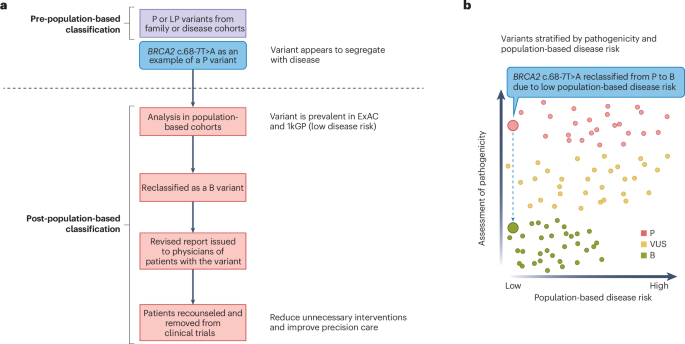Length of hospital stay and associated treatment costs for patients with susceptible and antibiotic-resistant Salmonella infections: a systematic review and meta-analysis
Length of hospital stay and associated treatment costs for patients with susceptible and antibiotic-resistant Salmonella infections: a systematic review and meta-analysis
The global disease burden of Salmonella infections in 2017 included 135 900 deaths caused by Salmonella Typhi and Paratyphi and 77 500 deaths caused by invasive non-typhoidal Salmonella, with increasing antimicrobial resistance (AMR) exacerbating morbidity, mortality and costs. The aim of our systematic review and meta-analysis is to estimate the length of hospital stay and associated treatment costs for patients with susceptible and antibiotic-resistant Salmonella Typhi, Paratyphi and non-typhoidal Salmonella infections.
Systematic review and meta-analysis.
We searched EMBASE, Medline/PubMed, Scopus, Hinari and LILACS databases for studies published between 1 January 2005 and 15 May 2024, with no language restrictions.
We included 30 studies that reported the length of hospital stay or treatment costs for patients with susceptible or antibiotic-resistant Salmonella Typhi, Paratyphi and non-typhoidal Salmonella infections. We excluded studies with sample sizes of less than 30 patients, those focused on non-human subjects and those not reporting our outcomes of interest.
Two reviewers independently screened studies and extracted data on the length of hospital stay and associated costs, with monetary values converted to 2019 USD. We aggregated data according to GDP per capita quantiles using a random-effects meta-analysis. We conducted a quality assessment using an adapted Joanna Briggs Institute tool.
Patients with drug-resistant Salmonella infections had longer hospital stays, with an additional 0.5–2.2 days compared with drug-susceptible Salmonella infections. Based on our meta-analysis, the mean hospital stay for typhoidal Salmonella infections was 6.4 days (95% CI 4.9 to 7.8) for drug-susceptible cases and 8.4 days (95% CI 5.1 to 11.7) for resistant cases in the lowest income quartiles. While there were insufficient data to perform a pooled analysis, individual studies inferred that treatment costs for resistant typhoidal Salmonella infections were higher than for susceptible infections, and resistant non-typhoidal Salmonella infections had longer hospital stays and higher costs compared with susceptible infections. Data were scarce from high-Salmonella-burden countries, particularly in sub-Saharan Africa and parts of Asia.
Patients with antibiotic-resistant Salmonella infections experience a greater healthcare burden in terms of hospitalisation length and direct costs compared with those with susceptible infections. We highlight the economic burden of AMR in Salmonella infections and emphasise the need for preventive measures.
Data are available in a public, open access repository. We used R software (V.4.2.3) for all analyses and uploaded the data and code to GitHub (https://github.com/ckim0509/amr_cost).
https://creativecommons.org/licenses/by/3.0/igo/
This is an open access article distributed under the terms of the Creative Commons Attribution IGO License (CC BY 3.0 IGO), which permits use, distribution,and reproduction in any medium, provided the original work is properly cited. In any reproduction of this article there should not be any suggestion that WHO or this article endorse any specific organization or products. The use of the WHO logo is not permitted. This notice should be preserved along with the article’s original URL.
If you wish to reuse any or all of this article please use the link below which will take you to the Copyright Clearance Center’s RightsLink service. You will be able to get a quick price and instant permission to reuse the content in many different ways.
Salmonella spp are gram-negative bacteria that cause foodborne illnesses and are classified into two species: Salmonella enterica and Salmonella bongori. Salmonella enterica subspecies enterica includes both typhoidal and non-typhoidal Salmonella (NTS). Typhoidal Salmonella refers to serovars Typhi and Paratyphi (A, B and C) that cause enteric fever. NTS refers to the other serovars (e.g., Typhimurium and Enteritidis,) that primarily cause gastroenteritis and invasive diseases.1 2
The primary mode of Salmonella transmission is through the faecal-oral route via contaminated food and water. While infections caused by various Salmonella serovars can manifest as mild and self-limiting conditions, they can progress to severe symptoms that may require hospitalisation.3 NTS, in particular, can cause febrile invasive disease (iNTS), which has a high case fatality rate of 20%–28% among children in Africa.4 Enteric fever caused by Salmonella Typhi and Salmonella Paratyphi accounted for 135 900 deaths globally in 2017.5 There were also an estimated 5 35 000 cases of iNTS worldwide in the same year, leading to around 77 500 deaths.6
The increasing antibiotic resistance in Salmonella enterica serovars threatens the effective treatment of Salmonella infections, with high resistance rates reported in various regions.7 In South Asia, overall antimicrobial resistance (AMR) in Salmonella increased from 53% to 77% over 10 years.8 In South America, AMR in Salmonella increased significantly between 2012 and 2021, with resistance rates to key antibiotics such as ciprofloxacin, ampicillin, ampicillin/sulbactam and ceftriaxone. In particular, ciprofloxacin resistance in Salmonella isolates increased from negligible levels in 2012–2013 to up to 60% in 2020–2021.9
Salmonella Typhi isolates are classified as multidrug-resistant (MDR) when they are resistant to chloramphenicol, ampicillin and trimethoprim-sulfamethoxazole and as extensively drug-resistant (XDR) when they meet the MDR criteria and are also resistant to fluoroquinolones and third-generation cephalosporins.10–12 The emerging resistance has rendered first-line antibiotics ineffective for treating Salmonella infections, while resistance to these critical second-line treatments, such as fluoroquinolones and cephalosporins, is also on the rise. In Salmonella Typhi, resistance markers were found in 100% of sequenced isolates from Pakistan and 75%–97% from Nepal, Cambodia and India. For NTS, fluoroquinolone resistance rates varied by serovar, country and source, with up to 13% of Typhimurium isolates from Scotland and 7% from the USA showing resistance.13
With rising AMR in Salmonella, assessing the health and economic burden and planning strategic responses are essential. Patients with drug-resistant Salmonella infections have excess mortality compared with those with susceptible infections.14 15 Additionally, they are associated with severe disease that results in an excess risk of hospitalisation, longer length of hospital stays and increased hospital costs compared with patients with susceptible Salmonella infections.16 17 Although individual studies have explored these outcomes in particular contexts, there has yet to be a comprehensive systematic review that synthesises the global economic burden of drug-resistant Salmonella infections.
Therefore, we conducted a systematic review and meta-analysis to estimate the length of hospital stay and associated treatment costs for patients with susceptible or antibiotic-resistant Salmonella Typhi, Paratyphi and NTS infections. Our specific study questions examine two key areas: (1) morbidity, utility and productivity impacts (Q1–Q2) and (2) hospital and healthcare system costs (Q3–Q6). Specifically, we sought to answer the following questions: (Q1) What is the length of symptomatic infection with a drug-susceptible, mixed or unknown resistant Salmonella infection? (Q2) What is the length of symptomatic infection with a drug-resistant Salmonella infection? (Q3) What is the length of hospitalisation with a drug-susceptible, mixed or unknown resistant Salmonella infection? (Q4) What is the length of hospitalisation with a drug-resistant Salmonella infection? (Q5) What is the per-patient cost of infection with a drug-susceptible, mixed or unknown resistant Salmonella infection? (Q6) What is the per-patient cost of an infection with a drug-resistant Salmonella infection?
We adhered to the PRISMA (Preferred Reporting Items for Systematic Reviews and Meta-Analyses) guidelines for reporting our systematic review and meta-analysis (see online supplemental material 1).18 We searched the EMBASE, Medline/PubMed, Scopus, Hinari and LILACS databases for articles published between 1 January 2005 and 15 May 2024, with no language restrictions (see online supplemental material 2A for the search strategy). For relevant publications in languages not known to the authors, we used Google Translate tools to translate abstracts and full-text papers to assess their eligibility and extract data. We selected 2005 as the start date to ensure that diagnoses and treatments for Salmonella infections reflect current clinical standards and that reported costs can meaningfully inform our analyses. We conducted our search in two stages. First, we searched for articles published between 1 January 2005 and 17 December 2021, and then we updated our search to cover the period between 15 December 2021 and 15 May 2024. The same search strategy was consistently applied throughout both stages of the search to ensure continuity.
Eligible study populations include those infected with antimicrobial-resistant and/or susceptible bacteria: typhoidal Salmonella (Salmonella enterica Typhi and Paratyphi) and NTS. Our inclusion and exclusion criteria were based on the population, intervention, comparison, outcome framework (see online supplemental material 2B).
Eight reviewers (CK, YK, AB, KM, ALM, OMS, SS and DMY) screened the articles. Two reviewers independently screened each study’s title and abstract to determine eligibility, and a third reviewer (IF or MH-A) resolved any discrepancies. After title/abstract screening, we reviewed the full text of eligible articles for study screening and data extraction.
The eight reviewers manually extracted data using standardised forms within the DistillerSR platform and used Google Sheets for subsequent data management. We extracted the following information from the included studies: author, year of publication, title, country/region, study dates and duration, study design, pathogens analysed, cohort details, detection method, length of hospital stay, and cost of hospitalised treatment and hospital stay. Where available, we extracted data on community cost indicators (e.g., length of illness) and comparisons of outcomes between drug-sensitive and resistant pathogens.
Two of three reviewers (CK, YL and HA) independently performed the quality assessments for each study, and discrepancies were resolved through discussion. We assessed the quality of the included studies using an adapted version of the Joanna Briggs Institute critical appraisal tool, using the quality assessment checklist specific to each study design.19
Since there is no checklist for cost-of-illness studies, which focus on the economic burden of diseases rather than comparing interventions, we adapted the economic evaluation checklist to assess the cost-of-illness study design (online supplemental material 2C). We estimated the risk of bias assessment outcome for each included study and calculated average quality scores for the studies grouped by their respective study design.
We categorised the extracted data on length of symptomatic infection, length of hospitalisation and per-patient costs according to different types of Salmonella enterica: Salmonella Typhi, Salmonella Paratyphi and NTS and their resistance status. For all extracted data, including the number of days and costs, we converted any estimates in other measures (ie, median) and uncertainty/range values (ie, SD, range, IQR) into means and 95% CIs to make results comparable across studies.20 To account for economic differences between countries, we categorised them into quartiles based on their gross domestic product (GDP) per capita using 2019 World Bank data.21 We calculated quantile cut-offs by dividing the GDP per capita values into four equal groups (quartiles), where quantile-1 represented the lowest quartile and quantile-4 the highest. We performed meta-analyses using a random effects model stratified by these GDP per capita quartiles, including only subcategories with more than three estimates from different study points. This quartile-based approach was chosen to provide more contextually relevant estimates across different economic settings rather than pooling all estimates globally. A random-effects model was chosen to account for anticipated heterogeneity between studies due to differences in study designs, population characteristics and geographical settings. Online supplemental material 2D details how we converted costs into 2019 US dollars and performed the meta-analysis. We conducted our analysis using R software (V.4.2.3), and the code is publicly accessible for reproducible analysis on https://github.com/ckim0509/amr_cost.
None.
The PRISMA flow diagram illustrates the identification, screening, eligibility and inclusion stages of our systematic review (see figure 1). We streamlined to 30 studies in our systematic review and included studies with populations affected by Salmonella Typhi (n=9), Salmonella Typhi and Salmonella Paratyphi (n=11) and NTS (n=10). The studies were conducted across diverse geographical locations, including Australia (n=1), Bangladesh (n=3), China (n=3), India (n=6), Indonesia (n=1), Italy (n=1), Nepal (n=1), New Zealand (n=1), Pakistan (n=8), Spain (n=1), Sweden (n=1), Taiwan (n=2), Turkey (n=2), the UK (n=1), the USA (n=2) and Vietnam (n=2). In some instances, multiple countries were involved in the same study.22 23
Figure 1
Preferred Reporting Items for Systematic Reviews and Meta-Analyses flow diagram. After removing duplicates from the 4993 studies identified, 3741 studies published between 1 January 2005 and 15 May 2024 were identified. After screening titles and abstracts, 113 studies proceeded to full-text review. After full-text screening, 83 studies were excluded due to different outcomes, different pathogens, small sample sizes and other reasons. 30 publications were ultimately included in the review. S. non-Typhi, non-typhoidal Salmonella; S. Paratyphi, Salmonella Paratyphi; S. Typhi, Salmonella Typhi.
The 30 studies included 15 case series studies, 4 cohort studies, 4 cost of illness studies, 2 cross-sectional studies, 4 prevalence studies and 1 randomised controlled trial. The average quality scores were 0.93 for case series studies, 0.83 for cohort studies, 0.91 for cost of illness studies, 0.83 for cross-sectional studies, 1 for prevalence studies and 0.55 for the randomised controlled trial (see table 1).
Table 1
Characteristics of studies in the systematic review
There were 13 studies24–36 that investigated the length of hospital stay for patients infected with resistant Salmonella enterica strains, while 7 of them25 27 28 31 32 34 37 also reported the length of stay for patients with drug-susceptible Salmonella enterica strains. The included studies showed patterns of longer hospital stays for patients with resistant Salmonella infections compared with those with susceptible infections across different types of Salmonella enterica and economic settings. For typhoidal Salmonella (Salmonella Typhi and Salmonella Paratyphi) in the lowest income quantile (Q1), our pooled estimate showed a mean hospital stay of 6.4 days (95% CI 4.9 to 7.8 days) for drug-susceptible, mixed or unknown resistant infections. In contrast, resistant typhoidal Salmonella infections in the same economic setting had a significantly longer mean stay of 8.4 days (95% CI 5.1 to 11.7 days), representing a 31% increase in hospitalisation duration. For NTS in high-income countries (Q4), our meta-analysis showed a mean hospital stay of 6.7 days (95% CI 5.6 to 7.8 days) for susceptible infections. We had insufficient data to generate pooled estimates for resistant infections (see figure 2 and online supplemental material 2E).
Figure 2
Length of hospital stay for drug-susceptible and drug-resistant Salmonella Typhi, Paratyphi and non-typhoidal Salmonella infections. The length of hospital stays for drug-susceptible and drug-resistant Salmonella Typhi, Paratyphi and nontyphoidal Salmonella infections was classified by GDP per capita quantile level and estimated from the meta-analysis. (A) Length of hospital stays of susceptible Salmonella Typhi and/or Paratyphi infection. (B) Length of hospital stays of resistant Salmonella Typhi and/or Paratyphi infection. (C) Length of hospital stays of susceptible Salmonella non-Typhi infection (D) Length of hospital stays of resistant Salmonella non-typhi infection. GDP, gross domestic product; MDR, multidrug-resistant; S. non-Typhi, non-typhoidal Salmonella; S. Paratyphi, Salmonella Paratyphi; S. Typhi, Salmonella Typhi; XDR, extensively drug-resistant.
Related studies have also supported pooled findings. In the study by Hume et al,28 patients with enteric fever caused by nalidixic acid resistant Salmonella had a significantly longer mean hospital stay of 7.9 days compared with 5.7 days for patients infected with non-nalidixic acid resistant isolates, representing a 2.2 day longer hospitalisation on average associated with nalidixic acid resistant strains. In a study by Herekar et al,27 patients with XDR Salmonella Typhi infections had the most prolonged median hospital stay of 8 days for adults and 6 days for children, compared with patients with MDR infections (median 5 days for adults and 4 days for children) and drug-sensitive infections (median 4 days for adults and 4.5 days for children).
Among patients with NTS, the mean hospital stay was significantly longer for those with antibiotic-resistant isolates compared with fully susceptible isolates (5.9 vs 4 days, p<0.05). Specifically, tetracycline resistance was associated with a 6 vs 4.2 day stay (p=0.068), while ampicillin resistance was associated with a 6.2 vs 4 day stay (p<0.05).31 Furthermore, a study by Duong et al35 in Vietnam reaffirmed that NTS patients resistant to more than one antibiotic had a pairwise mean difference of 0.91 extra hospital days (p=0.04) compared with fully susceptible isolates. In this study, ceftriaxone resistance significantly prolonged hospitalisation in children initially treated with third-generation cephalosporins (Wilcoxon signed-rank test; p ≤0.02), while ciprofloxacin resistance was not associated with longer length of stay for patients initially receiving fluoroquinolones in comparison to drug-susceptible patients. Patients admitted to a Hong Kong hospital with NTS infections resistant to nalidixic acid (indicating quinolone resistance) had 33% longer hospital stays compared with patients infected with NTS fully susceptible to quinolones (median of 4 days vs 3 days, p<0.05).25 Patients with NTS resistance to ampicillin, chloramphenicol, streptomycin, sulfisoxazole and tetracycline had a median hospital stay of 4.5 days, which was approximately half a day longer than the median stay of 4 days for patients with pan-susceptible NTS isolates.34
Studies have reported the duration of fever based on fever clearance time in patients infected with susceptible27 28 38–40 or resistant24 27 28 38Salmonella enterica serovars. For fever duration in typhoidal Salmonella (Salmonella Typhi and Salmonella Paratyphi) in the lowest income quantile, our meta-analysis estimated a mean fever clearance time of 11.7 days (95% CI 3.3 to 20 days) for drug-susceptible, mixed or unknown resistant infections. The pooled mean estimate for drug-resistant infections in the same setting was longer at 13.7 days (95% CI 8.1 to 19.2 days) (see figure 3 and online supplemental material 2E).
Figure 3
Length of illness for drug-susceptible and drug-resistant Salmonella Typhi and Paratyphi. The length of hospital stays for drug-susceptible and drug-resistant Salmonella Typhi and Paratyphi infections was classified by GDP per capita quantile level and estimated from the meta-analysis. (A) Length of illness (fever) of susceptible Salmonella Typhi and/or Paratyphi infection (B) Length of illness (fever) of resistant Salmonella Typhi and/or Paratyphi infection. GDP, gross domestic product; MDR, multidrug-resistant; S. non-Typhi, non-typhoidal Salmonella; S. Paratyphi, Salmonella Paratyphi; S. Typhi, Salmonella Typhi; XDR, extensively drug-resistant.
Related studies showed mixed results regarding fever duration differences between resistant and susceptible strains. Bandyopadhyay et al38 found that the mean fever clearance times were similar among patients infected with nalidixic acid-susceptible, nalidixic acid-resistant and MDR Salmonella Typhi. Similarly, Herekar et al27 also found no systematic differences in fever duration among patients infected with drug-sensitive, MDR and XDR strains. Khan et al36 reported that when antibiotics selected on the basis of laboratory-confirmed bacterial susceptibility were administered, the mean time to fever clearance was 4.03 days, significantly shorter than the overall mean of 10.84 days from antibiotic initiation to fever clearance.
Our meta-analysis of healthcare costs was constrained by the limited number of studies that reported costs according to resistance status. Nevertheless, the available studies consistently demonstrated higher costs related to resistant infections. Two studies25 41 estimated the direct hospital costs of resistant Salmonella infections. Mejia et al41 estimated the costs of overall Salmonella Typhi and Salmonella Paratyphi for mixed, MDR and XDR cases in Pakistan. The mean direct hospital costs (e.g., registration, clinical examination, inpatient stay, laboratory tests, drugs and medicines) were US$176 for all cases, US$139 for MDR cases and US$281 for XDR cases (all costs in 2019 USD). This represents a 103% increase in costs from MDR to XDR patients. Broughton et al25 compared medical costs for NTS in Hong Kong between quinolone-susceptible and quinolone-resistant patients. The mean costs were US$3493 and US$5961 for quinolone-susceptible and quinolone-resistant cases respectively, indicating a 71% increase in costs. Additional studies have reported direct hospital costs of Salmonella infections without differentiating resistance status.32 42 43 Hospitalised patients incurred US$78 in Bangladesh for Salmonella Typhi and Salmonella Paratyphi,42 US$2874 in the UK32 and US$5351 in Spain for Salmonella non-Typhi.43 Table 2 presents hospital costs for patients with susceptible and antibiotic-resistant Salmonella infections.
Table 2
Hospital costs for patients with susceptible and antibiotic-resistant Salmonella infections
Our systematic review and meta-analysis of studies estimated the length of hospital stay and associated treatment costs for patients with susceptible or antibiotic-resistant Salmonella Typhi, Paratyphi and NTS infections. Our findings show that patients with drug-resistant Salmonella infections had longer hospital stays, with an additional 0.5–2.2 days compared with drug-susceptible Salmonella infections. Our meta-analysis results show that the mean hospital stay for typhoidal Salmonella infections was 6.4 days (95% CI 4.9 to 7.8) for drug-susceptible cases and 8.4 days (95% CI 5.1 to 11.7) for resistant cases in the lowest income quartiles. Individual studies have suggested that treatment costs for resistant typhoidal Salmonella infections were higher than for susceptible infections and resistant NTS infections had longer hospital stays and higher costs compared with susceptible infections. Duration of fever varied across studies without clear patterns related to resistance.
Increased costs and hospital stays for resistant Salmonella infections are expected, given that resistant infections require more time to clear than susceptible infections, as has been demonstrated for other pathogens.44–46 This could be explained by increased antibiotic treatment failure for resistant Salmonella infections. Duong et al showed that changes to secondary or tertiary antimicrobials from the initial primary treatment were significantly correlated with prolonged hospitalisation.35
Our systematic review found few primary studies from regions with high typhoid fever burdens, including sub-Saharan Africa, parts of Southeast Asia (e.g., Cambodia, Laos, Myanmar), and the remaining Oceanic countries. Typhoid fever remains highly endemic in these settings. Furthermore, iNTS infections are especially prevalent in sub-Saharan Africa. Despite the high disease burden in these regions, our review found limited research quantifying healthcare costs, hospitalisation duration and economic consequences associated with resistant versus susceptible Salmonella infections. Better utilisation of routine healthcare records, including electronic health records where available, will help fill the gaps in data and evidence for Salmonella.
Our study has limitations. First, the timing of antibiotic administration, hospital presentation and prehospitalisation antibiotic use have not been controlled in our primary studies and have varied. This would likely not differ between resistant and non-resistant infections, but this might have contributed to the heterogeneity in our meta-analysis outcomes. Similarly, variability in study design and quality might have reduced the strength of the pooled estimates derived from our meta-analysis. The quality of evidence on length of hospital stay and costs varied across the included studies. Many studies were observational without control groups, limiting the ability to attribute outcomes to antibiotic resistance status. In addition, while we have pooled estimates across countries, healthcare costs can vary substantially across different healthcare systems and settings. We combined estimates to gain a broader overview of the economic burden and used random effects models along with gross domestic product (GDP) per capita quantiles to account for between-study heterogeneity and minimise differences in costs across countries. However, there remains uncertainty around applying cost estimates from one context to another.
Quantifying the impact on healthcare utilisation and costs through this systematic approach is critical for informing economic evaluations and policy decisions regarding interventions to curb Salmonella infections and AMR. The estimates from our study make a valuable contribution to understanding the overall disease and economic burden of AMR Salmonella. Our findings can be incorporated into disease models used for estimating the health and economic impact of interventions (e.g., vaccines, improved diagnostics, and antimicrobial stewardship programmes) on reducing the burden of AMR Salmonella.47 48
Preventive measures such as improved access to safe water, sanitation and hygiene (WASH) are essential to block transmission pathways.49 Further, vaccines mitigate AMR by preventing diseases and reducing antibiotic use associated with infections.50 51 WHO recommends introducing and scaling up typhoid conjugate vaccines (TCV) alongside WASH interventions in typhoid-endemic areas.52 Pakistan, Liberia and Zimbabwe have included TCV in immunisation programmes and campaigns.53 However, TCV introduction to other endemic regions has faced barriers including regulatory processes, development of implementation strategies and competing health priorities.54 Furthermore, vaccines are still lacking for Salmonella Paratyphi and NTS, although progress is being made to develop new vaccines.55 56
Robust data on the health and economic burden of resistant Salmonella strains are essential for evaluating the value of these interventions. Our systematic review addresses this critical evidence gap by providing estimates to quantify the healthcare and economic costs of AMR Salmonella. Furthermore, our methodological approach establishes a framework that can be applied to other high-priority pathogens where the evidence on the health and economic burden of AMR is limited.
In conclusion, based on our systematic review and meta-analysis, we confirm that resistant strains of Salmonella are associated with an increased economic burden in terms of increased hospitalisation costs and length of stay. However, there are remaining gaps in understanding the specific healthcare costs and extended durations of hospitalisation linked to antibiotic resistance in Salmonella infections, especially in high-Salmonella-burden countries, particularly in sub-Saharan Africa and parts of Asia, and this warrants future studies to address these evidence gaps.
Data are available in a public, open access repository. We used R software (V.4.2.3) for all analyses and uploaded the data and code to GitHub (https://github.com/ckim0509/amr_cost).
Not applicable.
We thank Ana Belen Ibarz Pavon for her review and valuable feedback. KA is supported by the International Vaccine Institute, Save the Children, Vaccine Impact Modelling Consortium (INV-034281) and the Japan Agency for Medical Research and Development (JP223fa627004).















